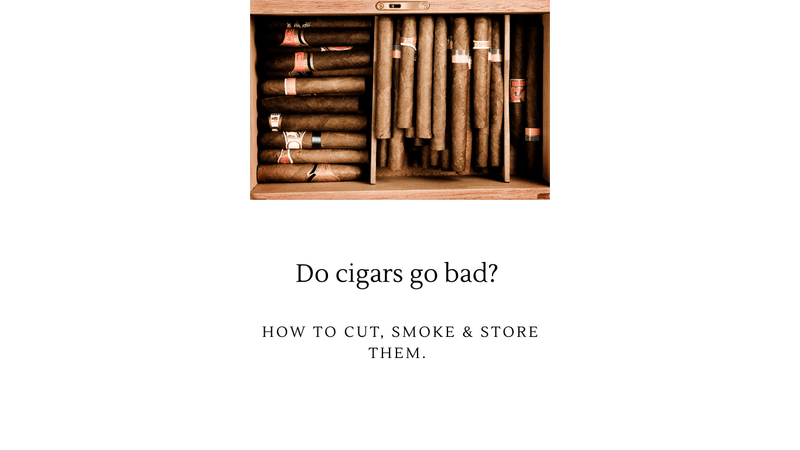
Do Cigars Go Bad? How to Cut, Smoke, and Store Them Properly
Whether you're new to cigars or brushing up on the basics, there are a few questions that come up time and time again. Do cigars expire? Where do you cut a cigar? How do cigars actually work, and how do you smoke one properly? We’re breaking it down in simple terms so you can enjoy every cigar with confidence.
Can Cigars Go Bad?
Cigars don’t technically expire like food, but they can go bad if they’re not stored correctly.
Cigars are made of natural tobacco leaves that need to be kept at a steady relative humidity of around 65–70% and a temperature of about 18–21°C (65–70°F). If cigars dry out, they become brittle, burn too quickly, and lose their flavour. If they get too moist, they can develop mould or become spongy and difficult to smoke.
How to tell if a cigar has gone bad:
-
Dry and cracked? It’s likely past saving.
-
Spongy or musty smelling? It may have been over-humidified or gone mouldy.
-
White powdery spots? That’s likely plume (a harmless sugar crystallisation), not mould. Mould looks fuzzy and grows into the wrapper.
How to prevent it:
Store cigars in a humidor or a humidity-controlled cigar storage box. If you don’t have one, a sealed Tupperware box with a Boveda humidity pack will do in a pinch.
Where Do You Cut a Cigar?
Knowing where to cut a cigar is key to a good draw.
You want to cut just above the shoulder—that’s the rounded cap near the head of the cigar (the end you put in your mouth). The goal is to open the cigar without cutting too low and unraveling the wrapper.
Here’s how:
-
Use a sharp guillotine cutter or a punch cutter.
-
Identify the cap, it usually looks like a small circular line at the head.
-
Cut just above the cap line, about 2–3mm from the end.
-
Aim for a clean cut to avoid tearing.
A clean cut helps ensure a smooth draw and better flavour delivery.
How Do You Smoke a Cigar?
Smoking a cigar isn’t like smoking a cigarette. It’s not about inhaling—it’s about savouring.
Here’s a simple guide:
-
Cut the cigar as described above.
-
Toast the foot (the open end you light) with a butane torch or soft flame lighter—don’t let the flame touch it directly at first. Rotate it to warm the tobacco.
-
Light the foot evenly by holding the flame just below and puffing gently.
-
Take slow puffs - about one every 30–60 seconds. This keeps the cigar burning cool and lets the flavour develop.
-
Don’t inhale. Cigar smoke is meant to be savoured in the mouth, not drawn into the lungs.
-
Let it go out naturally if you’re finished. No need to stub it out.
Cigars are about time and ritual. A good smoke could last anywhere from 30 minutes to 2 hours depending on size.
How Do Cigars Work?
Cigars are made of three main parts:
-
Wrapper: The outer leaf, usually the most delicate and flavourful.
-
Binder: Holds the filler together.
-
Filler: The blend of tobacco leaves inside that drives the overall strength and complexity.
When you light a cigar, you’re combusting the filler and drawing smoke through the barrel (the body of the cigar). The flavours develop as oils in the tobacco are released and interact with heat, oxygen, and moisture in your mouth.
The way the cigar is rolled, aged, and stored all affects the final experience. That’s why even cigars with similar tobacco can taste totally different depending on how they’re made and kept.
Final Thoughts
Whether you're a beginner or brushing up on cigar basics, knowing how cigars age, how to cut and smoke them properly, and what makes them tick helps you get more out of every stick. And remember, if you’re ever in doubt, our team at The Smoking Jacket is always here to help.



0 comments